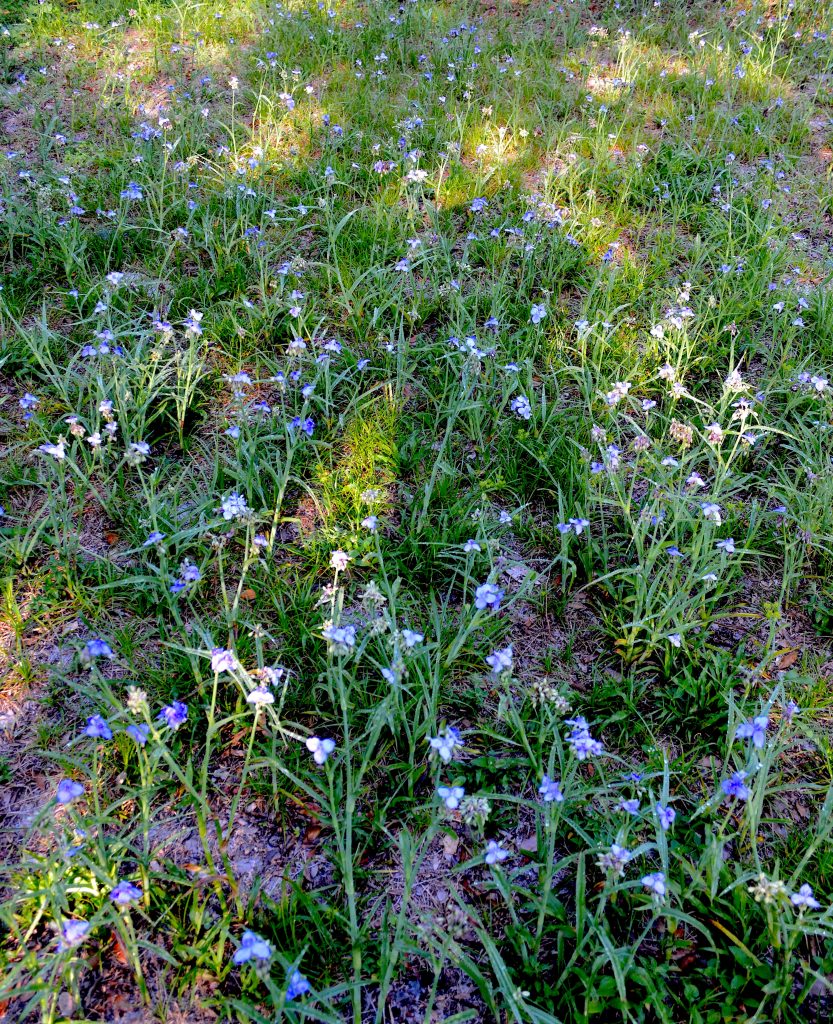
Spiderworts bloom all year but they favor spring. Photo by Green Deane
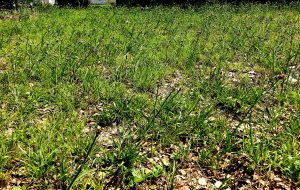
Spiderworts blossom in the morning, then grow towards the afternoon sun. Photo by Green Deane
Spiderworts got me in trouble once. I let them cover my entire lawn in suburbia. That caused a visit by LEOs (Lawn Enforcement Officers.) I was cited in writing for have an unkept lawn which meant covered with weeds (that they were pretty, native “weeds” was deemed irrelevant.) As I thought the citation wrong I read the pertinent law. It said a “weed” was a plant unintentionally over 18-inches high. Problem solved. My spiderworts were intentionally over 18-inches high. I watered and fertilized them. Consequently I beat the rap. And while Spiderworts can be found blooming nearly all year they favor the spring and are painting the landscape now with the attractive blue flowers (and sometimes white, occasionally ruby.) Spiderworts are quite edible, at least all the parts above ground. They can be consumed raw, cooked or fermented (I have a jar of them pickled now.) While this is not too descriptive they taste “green” to me, not distinctive but pleasant. Spiderworts have a history, by the way, being connected to John Smith of Pocahontas fame. You can read about them here.
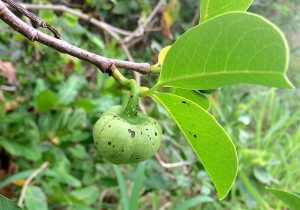
A growing Pond Apple in mid-May. Photo by Green Deane
Pond Apples were probably not considered edible until someone was starving. They are not “apples” by any definition and as a fruit the are not top shelf though two genus mates are commercially available. While Pond Apples reportedly grow on the coasts from Brevard and Manatee counties south I personally have never found one north of Port Charlotte. They are prolific on Marco Island a hundred-some miles to the south. Perhaps native to western Africa the theory goes the seeds floated like marooned sailors to South America and then spread orth stopping its climb in Florida. In Australia, where it was introduced, the Pond Apple is called an invasive menace. (And one of Australia’s trees, the Melaleuca, is an invasive species in Florida.) The Pond Apple is also a problem in Fiji and Sri Lanka. They like it wet. “Swamp Apple” would have been a better name. Look for them where Cypress grow or actually any wet, warm spot. They can be quite scraggly when competing with other swamp trees for light. And Pond Apples are barely edible but can be made into jelly. Avoid the seeds and do not touch your eyes right after touching the seeds. Wash those hands first. The seeds have been used to kill fish. Seeds and the leaves are insecticidal having been used to kill lice in chicken coops. The tree is related to the more edible custard apple and soursosp and, interestingly, the pawpaw. To read more about the Pond Apple go here.
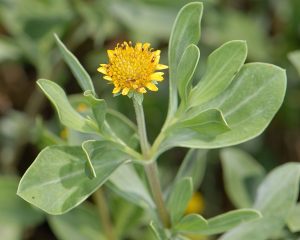
Sea Oxeye has pointe green bracts directly below the yellow blossom.
And as on the front page of the website this week you can expand your foraging tastes with the Sea Oxeye. What’s odd about the Sea Oxeye is that it’s a prolific coastal plant you can overlook. It occupies every possible niche but is not too showy nor does it grow too tall. Even the “tree” version is short. The species is just kind of there. The biggest problem is confusion in the ethnobotanical literature. One species is definitely edible, and another might be, too. But incomplete references make that a bit of a problem. Fortunately there is an easy way to identify our edible from others: Its bracts are needle sharp. While I like the big leaves I find it difficult to eat a lot of them. You can read about the Sea Oxeye here.
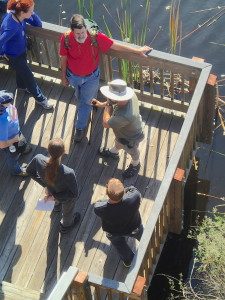
Foraging Classes are held rain or shine. Photo by Kelly Fagan
Foraging Classes: I have only one official foraging class this weekend and it is Saturday at Eagle Lake in Largo, 9 a.m. Sunday however, I am attending a fungal hunt Sunday with Joshua Buchanan west of Sanford, Fl., more details below.
Saturday May 19th, Eagle Park Lake, 1800 Keene Road, Largo, FL 33771. 9 a.m. Meet at the pavilion near the dog park.
Sunday May, 20th: Join the Orlando Mushroom Group for its spring fungal forage a few miles west of Sanford. We will meet at Katies Landing, 262 Wekiva Park Dr, Sanford, FL 32771. 9 a.m.. Cost is $10 per adult. Leading the event is Joshua Buchanan who has spent many years studying mushrooms in both California and Florida. I will be there to rummage around as well. For more information or to let us know you are attending go the the Orlando Mushroom Group page on Facebook or email GreenDeane@gmail.com.
Saturday, May 26th, George LeStrange Preserve, 4911 Ralls Road, Fort Pierce, FL, 34981. 9 a.m.
Sunday May 27th, Dreher Park, 1200 Southern Blvd., West Palm Beach, 33405. 9 a.m. just north of the science center.
Saturday, June 2nd, Red Bug Slough Preserve, 5200 Beneva Road, Sarasota, FL, 34233, 9 a.m.
Sunday June 3rd, Colby-Alderman Park: 1099 Massachusetts Street, Cassadaga. Fla. 9 a.m., meet near the restrooms.
Saturday, June 9th, Blanchard Park, 10501 Jay Blanchard Trail, Orlando, FL 32817. 9 a.m. Meet at the pavilion east of the tennis courts near the YMCA.
Sunday, June 10th, Boulware Springs Park, 3420 SE 15th St., Gainesville, FL 32641. Meet at the picnic tables next to the pump house, 9 a.m.
To learn more about the classes go here.
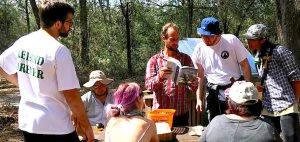
Joshua Buchanan and the Orlando Mushroom Group
As you can tell by the schedule above the Orlando Mushroom Group will have its spring mushroom hunt with Joshua Buchanan May 20th starting at Katie’s Landing which is 262 Wekiva Park Dr, Sanford, FL., on the Wekiva River . Time: 9 a.m. Fee: $10 per adult. Rain or shine. Dress for bugs, walking and know rattle snakes are common in the area. Thus walking sticks are recommended. We will be finding and identifying various local mushrooms. The location has produce a wide array of both edible and non-edible mushrooms from chanterelles to Lactifluus to Boletes. You can RSVP on the Facebook page and or email GreenDeane@gmail.com.
 Donations to upgrade EatTheWeeds.com and fund a book are going well and past 50%. Thank you to all who have contributed to either via the Go Fund Me link, the PayPal donation link or by writing to Green Deane POB 941793 Maitland FL, 32794. The site has been up for a dozen years, has always been free, and went through a couple of difficult upgrades. The most recent upgrades have been paid for, again thank you. A new server also being considered with Host Gator being the temporary home. Trying to include more than a year’s worth of newsletter into a new category function is proving to be a programming headache. Again, thank you.
Donations to upgrade EatTheWeeds.com and fund a book are going well and past 50%. Thank you to all who have contributed to either via the Go Fund Me link, the PayPal donation link or by writing to Green Deane POB 941793 Maitland FL, 32794. The site has been up for a dozen years, has always been free, and went through a couple of difficult upgrades. The most recent upgrades have been paid for, again thank you. A new server also being considered with Host Gator being the temporary home. Trying to include more than a year’s worth of newsletter into a new category function is proving to be a programming headache. Again, thank you.

Green Deane Forum
Want to identify a plant? Looking for a foraging reference? Do you have a UFO, an Unidentified Flowering Object you want identified? On the Green Deane Forum we chat about foraging all year. And it’s not just about warm-weather plants or just North American flora. Many nations around the world share common weeds so there’s a lot to talk about. There’s also more than weeds. The reference section has information for foraging around the world. There are also articles on food preservation, and forgotten skills from making bows to fermenting food. One special section is “From the Frightening Mail Bag” where we learn from people’s mistakes. You can join the forum by clicking on the button in the menu line.
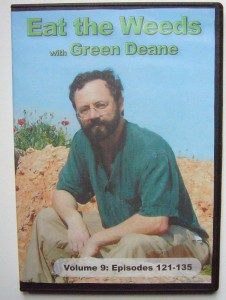
The DVD set has 135 videos.
All of Green Deane’s videos available for free on You Tube. They do have ads on them so every time you watch a Green Deane video I get a quarter of one cent. Four views, one cent. Not exactly a large money-maker but it helps pays for this newsletter. If you want to see the videos without ads and some in slightly better quality you can order the DVD set. It is nine DVDs with 15 videos on each. Many people want their own copy of the videos or they have a slow service and its easier to order then to watch them on-line. They make a good gift for that forager you know. Individual DVDs can also be ordered. You can order them by clicking on the button on the top right of this page or you can go here.
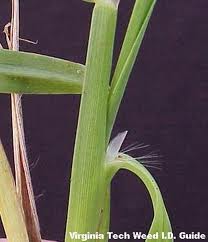
Not Barnyard Grass.
Botany Builder 26: Ligule is a variation of a Dead Latin word meaning “little tongue.” Ligules are an important element of identification particularly in grasses. Usually where a blade of grass separates from the main grass stem there is a ligule (LIG-yool.) That white membrane in the center of the picture to the left is a ligule. Characteristics of the ligule help with the grass’ identification, or in the case of Barnyard Grass, its absence also helps the identification. Ligules are also used in reference to the 20,000 species in the Composite family. In that case it usually refers to the flattened part of a ray of the blossom.
This is weekly issue 304.
If you would like to donate to Eat The Weeds please click here.


I enjoy your article on Pond Apples. There is a third option for what to do with this member of the family. Take a nice species of pond apple with a good root structure and dig it up or purchase and plant in a wet area or pond edge of your yard. Then find someone with an equally nice example of sugar apple, graft the sugar apple to the pond apple and you have a wonderful fruit growing in an area that it would not otherwise be able to grow. Happy grafting.
In great need to your Botany Builder(s) .As said, specially for grasses – for us in Africa and particularly my country,Sudan , surrounding the Nile and triburitaries as well as towards southern Sudan, some people feed on seeds of various grasses . We’ve just started “Ramadan” fasting month . ” Beleela” is local name for one of the dishes served at breakfasting Ramadan days . It usually comprises certain grass seeds , boiled , salted , and spiced or sugarred and sometimes butter is added.
in London I was taking the historical walking tour and tradescant, the namesake of spiderworts, was mentioned, not for botany but for opening the first public museum in London, to show off his cabinets of curiousities, and budgets of paradoxes, to get a tax break and so on.